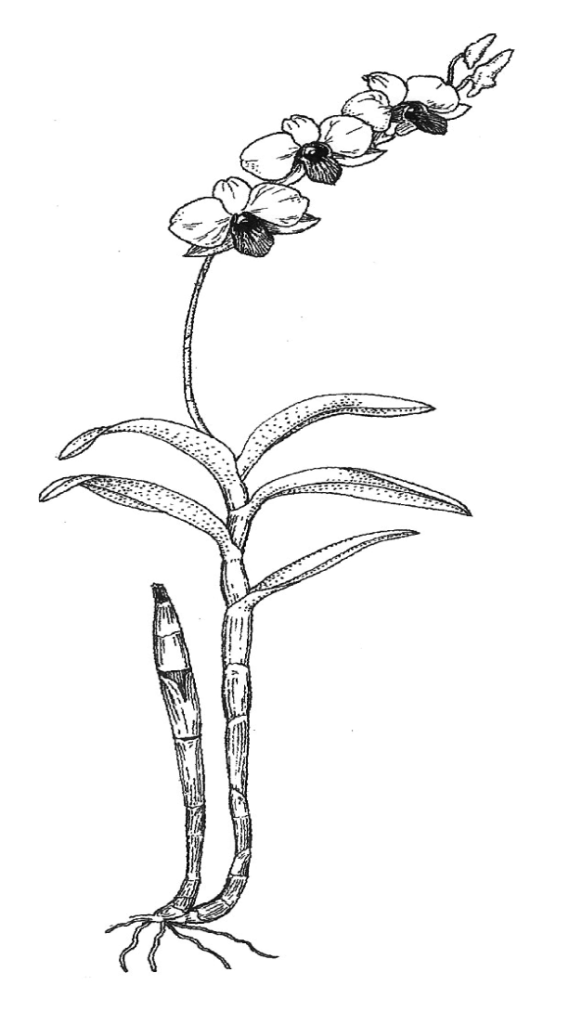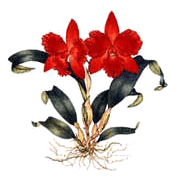Dendrobium
den-DROH-bee-um

Dendrobiums are among the most commonly encountered orchids in the retail trade. Like most other cultivated orchids, dendrobiums are epiphytes, or air plants. They have well-developed water-storage organs (pseudobulbs), often called “canes” for their upright, leafy appearance. They should be potted in porous, free-draining media. There are many different types of dendrobiums available to the specialist grower.
Light
Sufficient light is important for healthy growth and flower production. Provide bright light. In the home, an east, west or lightly shaded south window.
Leaves should be medium olive-green color. Many varieties’ leaves turn yellow and fall off, a natural process.
Temperature
Provide nights of 60 to 65 F; days of 80 to 90 F. Temperatures up to 95 to 100 F are beneficial if humidity and air circulation are increased. Low temperatures (below 50 F) may cause leaf drop.
Water
Keep evenly moist while in active growth. Allow to dry between waterings after growth is mature.
Humidity
In the home, place the plants on trays of gravel, partially filled with water, so that the pots never sit in water, or set a bowl of water next to your plants and allow the water to evaporate. In the greenhouse, use a humidifier if conditions are too dry.
Fertilizer
Should be provided on a regular basis. A good general rule is to apply a balanced (such as 20-20-20) water soluble fertilizer “weakly.” That is, fertilize every week at one half of the recommended dilution.
Potting
Should be done every two to three years before mix loses consistency (breaks down). Pot firmly in a porous medium grade mix, giving aeration and ample drainage, allowing enough room for two years’ growth.
Dendrobiums grow best in pots small for the size of the plant.
